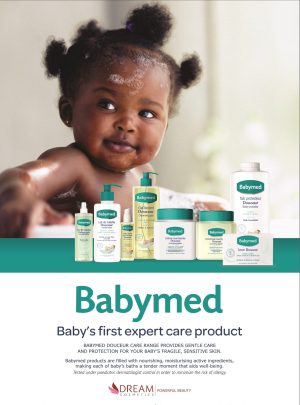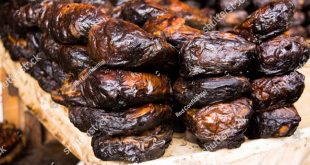
This lecture was delivered by the Executive Director / CEO of Nigerian Export Promotion Council (NEPC) Mr. Olusegun Awolowo, at the Training Programme on Producing Aflatoxin-Free Oil Seeds for Export aimed at producing aflatoxin-free melon meant for farmers and other stakeholders with the theme “Promoting Quality Melon and Oil Seeds for Export through Value Chain Approach’’ at Benin City, Edo State.
The program was informed by the need to create awareness and training of our teeming farmers/ producers on the need to produce quality exportable products. As we may all be aware, aflatoxins are a group of chemically similar toxic fungal metabolites (mycotoxins) produced by certain moulds of the genus Aspergillus growing on a number of raw food commodities.

Aflatoxins are highly toxic compounds and can cause both acute and chronic toxicity in humans and many other animals. Their importance was first established in 1960 when 100,000 turkeys and other poultry in the UK died in a single event. The cause of this was eventually traced to a toxic contaminant in groundnut meal used in the bird’s feed. The contaminant was later named aflatoxin.
The aflatoxins consist of about 20 similar compounds belonging to a group called the difuranocoumarins, but only four are naturally found in foods. These are aflatoxins B1, B2, G1 and G2. Aflatoxin B1 is the most commonly found in food and also the most toxic. When lactating cattle and other animals ingest aflatoxins in contaminated feed, toxic metabolites can be formed and may be present in milk. These metabolites, aflatoxin M1 and M2, are potentially important contaminants in dairy products.

The World Bank estimates that currently nine African countries including Nigeria will have 64% of their annual export of nuts, fruits,& cereals valued at about $674million in trade annually reduced as a result of rejections in overseas’ markets caused by mycotoxin contamination and other SPS related issues.

The Food and Agricultural Organization (FAO) has equally estimated that 25% of the world’s food crops are affected by mycotoxins, of which the most notorious are aflatoxins. It has also been estimated by the Centre for Disease Control (CDC) that more than 4.5 billion people in developing countries worldwide are at risk of chronic exposure to aflatoxin through contaminated food.
It is imperative and disturbing to note that between 2003 –13, Nigerian agricultural products mainly melon, groundnut, palm oil, beans, Ogbono (Irving Gabonesis) witnessed high presence of aflatoxin. This has resulted in the increasing rate of alert notifications under the Rapid Alert System for Food and Feed (RASFF) from the EU on some of Nigerian agricultural products with the attendant loss in export revenue annually.
The high level of aflatoxin in melon and other oil seeds have been attributed to the poor pre and post harvest handling practices along the value chain especially at the harvesting and storage stages. Unfortunately, this is as a result of lack of information and absence of awareness on Good Agricultural Practices.
It is against the backdrop of the above scenario that the Nigerian Export Promotion Council in view of its mandate has found it expedient to address these critical challenges by organizing this workshop. Interestingly, the relevant experts from regulatory and research institutions with relevance to the subject matter have been assembled to critically examine the issues and proffer solutions.
The Council has also invited exporters to meet with farmers at this workshop with a view of sourcing quality and aflatoxin – free melon for export.
This gathering is meant to equip participants on the requisite knowledge needed to acquire Good Agricultural Practices (GAP) on melon and other oil seeds. It would also extensively address the issue of high aflatoxin contamination in melon and groundnut. Some aspects of Sanitary and Phyto-sanitary (SPS) measures would also be discussed to enlighten the participants on the monitoring and enforcement of the relevant regulatory and trade provisions, thus maintaining international market access for Nigerian Melon and oil seeds.
It might interest you to note that melon, groundnut, palm oil are national products and important food for our people. So there is the need therefore to adopt GAP so that Nigerians both at home and abroad can consume wholesome food. I therefore implore participants to be conscious of the fact that adherence to GAP is imperative.
Three States of Edo, Kwara and Kaduna have been selected in the second phase of this national programme. Earlier, three major producing States of Nasarawa, Benue and Niger have been covered under the first phase and more melon producing States will be hosting similar programmes in the near future, in order to ensure that all melon produced in Nigeria are aflatoxin-free.
It is noteworthy that the realization of the millennium development goal of reducing by half the number of people suffering from hunger by year 2015 will require a significant increase in the amount of food grains produced in the developing countries.
However, food quality and safety issues resulting from aflatoxin contamination present a serious obstacle to improving nutrition, enhancing agricultural production and linking small holder farmers to markets. This is therefore a clarion call on all and sundry to put their hands on deck to ensure the production of aflatoxin-free products by our farmers.
Finally, while wishing you meaningful deliberations, I want to express my appreciation to everybody present here today, especially the participants, our partners and most importantly our able resource persons, for finding time to come to enlighten and share their experiences with us. It is my expectation that at the end of this programme, our farmers would have been adequately equipped to stem the trade of aflatoxin contamination in Nigeria agricultural products.
Aflatoxins could also be present in a wide range of other food commodities, particularly cereals, spices and tree nuts. Maize, groundnuts (peanuts), pistachios, brazils, chillies, black pepper, dried fruit and figs are all known to be high risk foods for aflatoxin contamination, but the toxins have also been detected in many other commodities. Milk, cheese and other dairy products are at risk of contamination by aflatoxin The highest levels are usually found in commodities from warmer regions of the world where there is a great deal of climatic variation.
At high enough exposure levels, aflatoxins can cause acute toxicity, and potentially death, in mammals, birds and fish, as well as in humans. The liver is the principal organ affected, but high levels of aflatoxin have also been found in the lungs, kidneys, brains and hearts of individuals dying of acute aflatoxicosis. Acute necrosis and cirrhosis of the liver is typical, along with haemorrhaging and oedema. LD50 (lethal dose) values for animals vary between 0.5 and 10 mg/kg body weight.
 MMS PLUS NG – Maritime, Aviation, Business, Oil and Gas News Online Newspaper with coverage in Maritime, Oil and Gas, Aviation, Power and Energy as well as Financial News
MMS PLUS NG – Maritime, Aviation, Business, Oil and Gas News Online Newspaper with coverage in Maritime, Oil and Gas, Aviation, Power and Energy as well as Financial News









